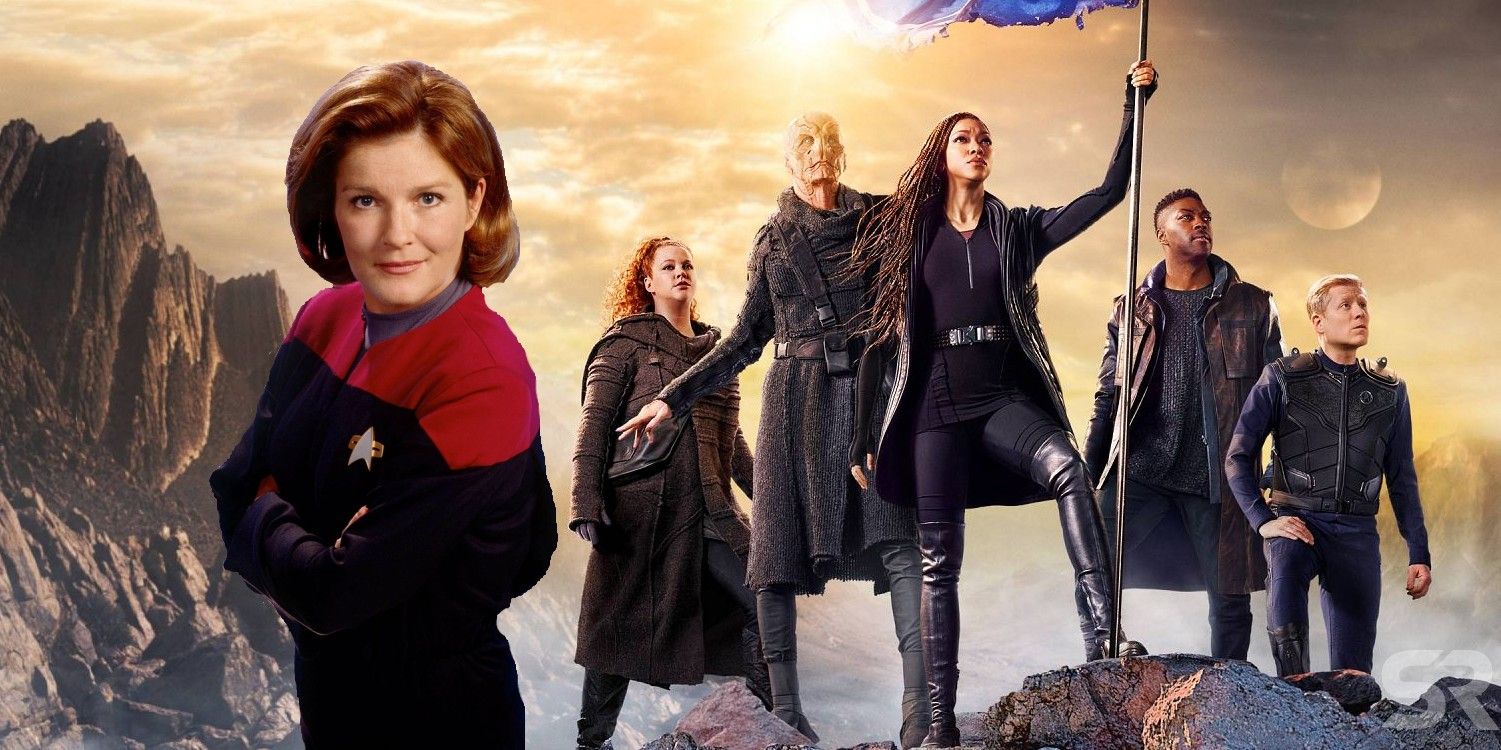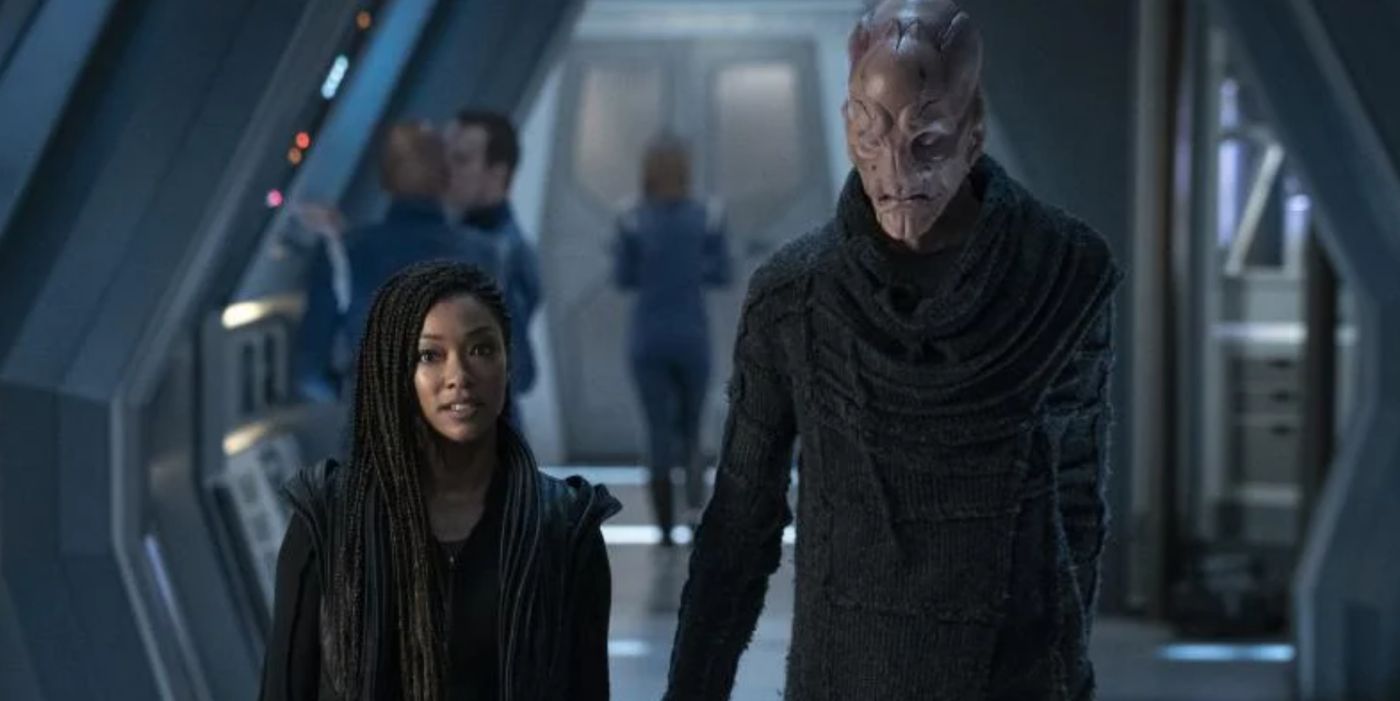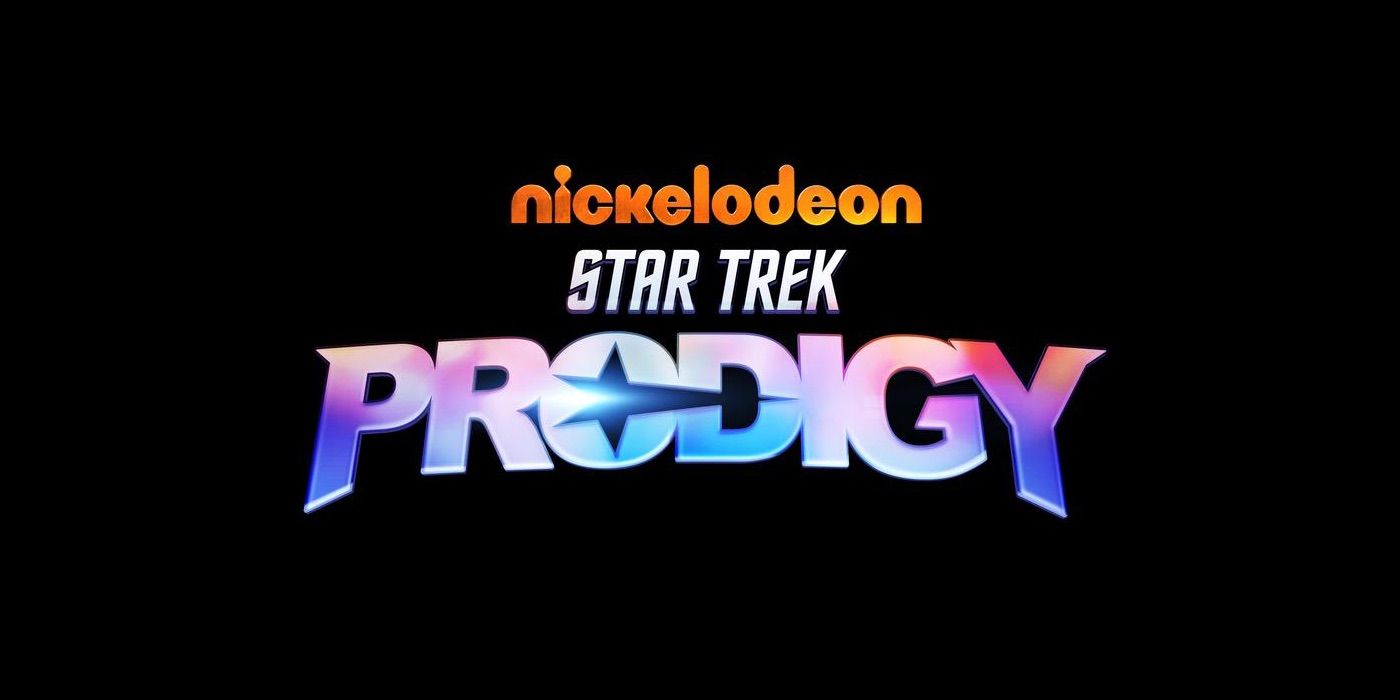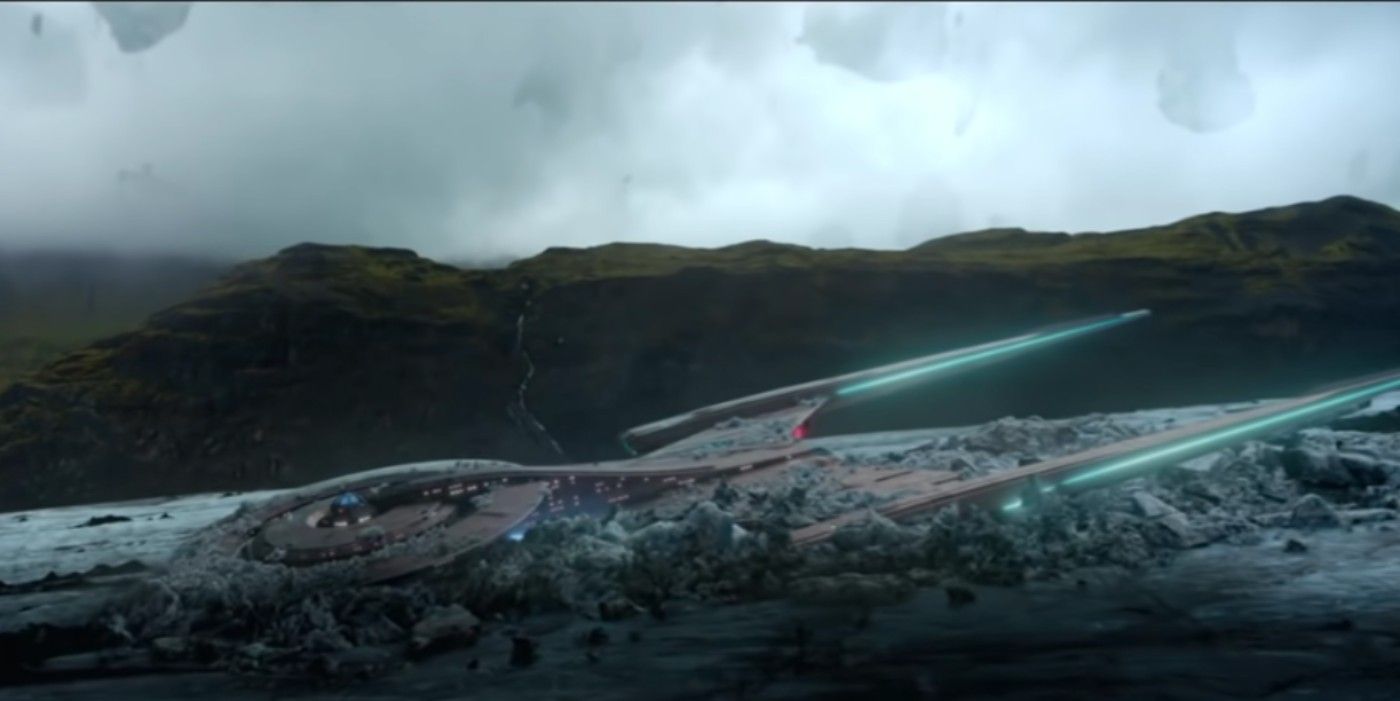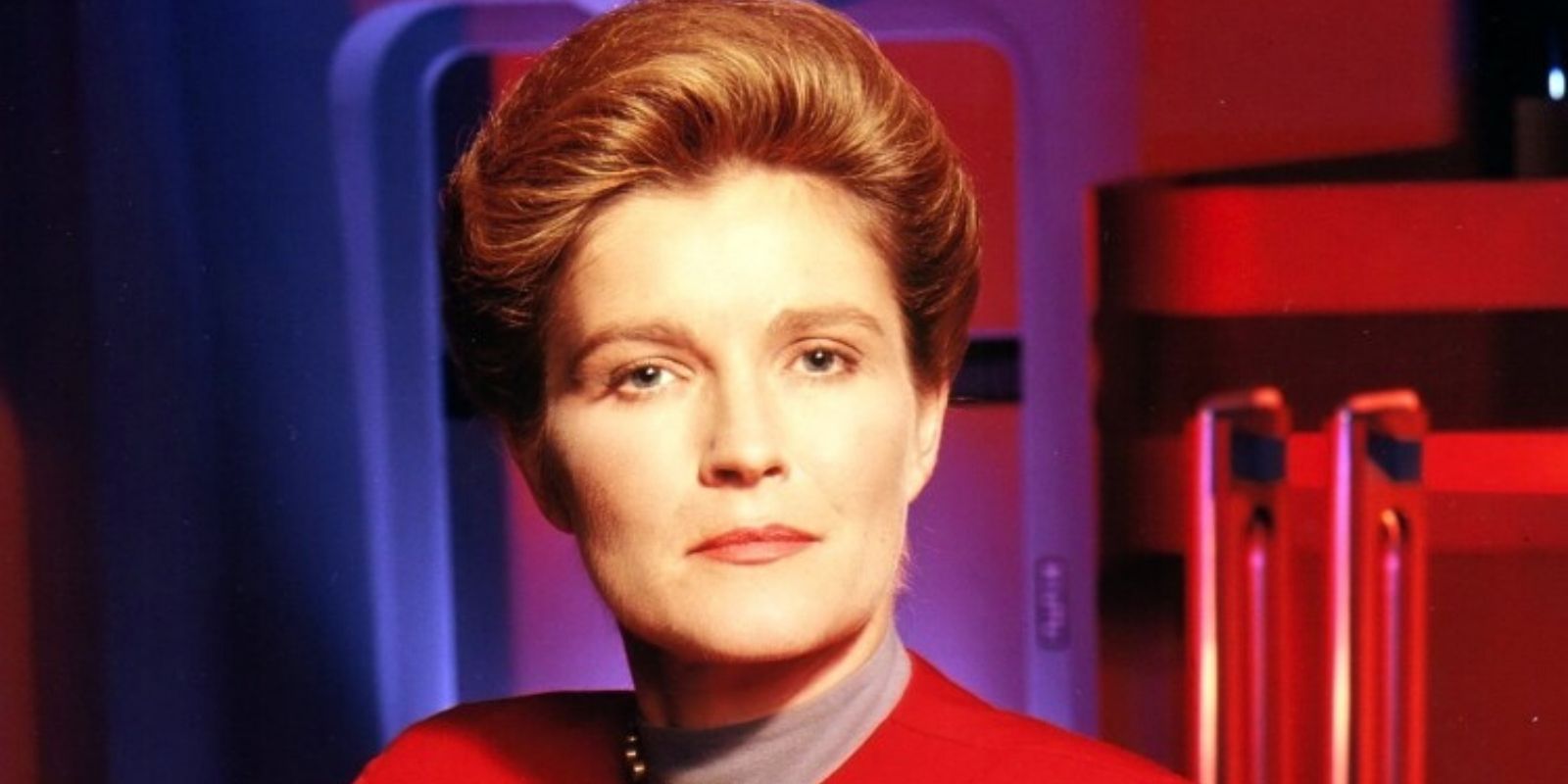Star Trek: Prodigy has been announced as the latest show joining the Star Trek franchise in 2021, and while little is known about the new series just yet, season 3 of Stark Trek: Discovery may hold some answers to the time period in which Prodigy is set. Star Trek: Discovery season 3 premiered on October 15th, and right from the start hit the ground running with a compelling new storyline set in a previously unexplored time period for the franchise: the 32nd century. The crew of the Discovery, lead by Michael Burnham in the Red Angel suit, jumped 930 years into the future at the end of season 2, and the first few episodes of season 3 see Michael and Discovery's crew arriving and attempting to acclimate to this strange new universe they find themselves in.
In contrast to Discovery, Star Trek: Prodigy is still a relative unknown for the franchise, mostly because it has yet to be released. Some tantalizing details have been revealed to whet viewers' appetites, however, namely the premise, the fact that the show will be animated, premiere on Nickelodeon, and be geared towards a younger audience, and that Kate Mulgrew will be reprising her role as the iconic Captain Kathryn Janeway from Star Trek: Voyager. These details have given fans a lot to think about, and with so little yet known about Star Trek: Prodigy, it is only natural to speculate about what the show might look like when it is released in 2021.
One thing that is a pressing question in the minds of Star Trek fans is what time period Star Trek: Prodigy will be set in. The franchise has thus far encompassed a wide range of time periods over a myriad of shows, but most of the action takes place beginning in the mid 22nd century and spanning about 250 years to the very end of the 24th. Season 3 of Discovery however has bypassed that with its time jump, and paved the way for Star Trek: Prodigy to continue establishing the canon it is currently setting up.
Star Trek: Discovery Season 3 Is Set In The Far Future
The 32nd century was completely unexplored territory for the Star Trek franchise up until season 3 of Star Trek: Discovery. While time travel has been an often-used plot device, no other shows or movies in the franchise have explored as far into the future. Discovery is an interesting choice as a show to look so far ahead in the timeline; the first season of the show is set about ten years before the beginning of Star Trek: The Original Series, meaning that it is rooted in the past in relation to the cadre of shows considered "classic Trek" (barring Star Trek: Enterprise). The jump to the 32nd century in season 3 means that Discovery has now covered previously unknown territory on both ends of the Star Trek timeline.
It was inevitable that Discovery's crew would arrive in a future that was completely different from what they knew, but one of the biggest surprises for the crew was learning about the collapse of the Federation and Starfleet. Even more surprising was the reason for this collapse: a mysterious event called The Burn, during which most of the dilithium in the galaxy spontaneously exploded. Since dilithium is the main power source for starships, it is not hard to see why this event has such a devastating effect on the Federation. As a result of The Burn, the 32nd century features a galaxy with no centralized powers and a Starfleet that is now only a handful of starships and space stations still attempting to keep the traditions of the institution alive. While certainly a bleak outlook on the future, these new events give season 3 of Star Trek: Discovery a lot to explore throughout the season, namely the cause of The Burn and if there is a way that the Federation can be rebuilt to its former glory.
Star Trek: Prodigy — What Is Known (So Far)
Besides the casting of Kate Mulgrew as Captain Janeway, and the age range the show will target, the most interesting thing revealed so far about Star Trek: Prodigy might be its premise: a group of lawless teens who discover a derelict Starfleet ship and use it to search for adventure, meaning, and salvation. This premise has a lot of new and interesting concepts built into it. There have been other "lawless" groups that have featured in storylines in past shows before, namely the Maquis. Additionally, some shows or movies have offered audiences a look at teenage characters, or flashbacks to the main characters' younger days. These instances however have almost always been set during the character's years at Starfleet Academy, undergoing the rigorous training it takes to become a Starfleet officer. If the premise is any indication, Prodigy's focus seems to be on a group of teens who are clearly not meant to be members of Starfleet. This should provide some rarely-seen perspectives on the Star Trek universe.
In regards to the premise more broadly, it is being set up to tie in well with the canon established in season 3 of Star Trek: Discovery. The idea of a group of lawless teens finding a derelict ship becomes complicated if Star Trek: Prodigy is going to be set within the well-trodden time period of the 22nd-24th centuries. Starfleet ships have historically been too well maintained, guarded, and used to be available for anyone to find and co-opt for their own means. Of course, there could be other explanations for the teens' discovery of a derelict ship; it is possible that the ship was abandoned or lost due to a crash or a battle of some kind. The more interesting possibility however is that the reason Star Trek: Prodigy's main characters have access to a Federation ship is because the Federation is no longer around to claim it. This, of course, could only happen after the collapse of the Federation in the future, so the possibility that Prodigy is actually set during then becomes highly likely when this idea is taken into account.
Star Trek: Prodigy Can Build From Discovery Canon
Setting Star Trek: Prodigy in the 32nd century makes sense narratively. It would be a smart decision to focus on a time period that has more potential for new storylines since much of the 22nd-24th centuries have already been heavily explored. While two centuries might seem like a long time, the sheer volume of Star Trek shows and movies that have thus far been packed into the time period makes for a timeline that would not benefit from yet another show cropping up to add in new events. Now that here is canon being established in the far future, however, it only makes sense to take advantage of it, and while season 3 of Discovery is set to cover a lot of ground, there will almost certainly be things it doesn't have time to explore or places where the canon can be expanded upon.
Star Trek: Prodigy is a good fit the explore these things. Not only does its premise support being set in a Wild-West-type future, but as a new show, the creative team is presumably looking for a way to incorporate interesting new storylines. Setting the show in the 32nd century would give them a lot of new ideas to work with, and relieve the pressure of finding a niche that has not already been explored in established Star Trek canon.
How Captain Janeway Can Return
Of course, there is the question of how Captain Janeway might fit into all of this. Star Trek has something of a tradition of bringing back characters from previous shows to garner interest in whatever new show they are appearing in. Janeway is also a good choice for Prodigy in particular, given her qualities as a leader and the fact that she is a fan-favorite. The 32nd century is roughly 700 years after the end of Star Trek: Voyager though, and even with extended lifespans in the future, it is safe to say that realistically, Janeway would not still be alive.
While this might seem like a barrier to Janeway's return, there are a number of explanations as to how the creative team may be planning to incorporate her. If Star Trek: Prodigy is set in the 32nd century, it is most likely that the Janeway audiences will be introduced to will not be the original Kathryn Janeway, but a version of her that has lived on after her death. This could take the form of a clone or as some kind of hologram or computer program, two things have had an established history in Star Trek canon. A computer program or hologram is the more likely explanation out of the two, only because Star Trek's holographic technology is more common than cloning within the Federation.
Additionally, as unlikely as it may seem, there are also ways for the original Janeway to be part of the show. She could have been cryogenically frozen at some point in time, a procedure that would preserve her body and mind for wake up at a later date. It is also possible to use a transporter accident as an explanation. This has actually been done to reintroduce a classic character before; in the Star Trek: The Next Generation episode "Relics", the character of Montgomery Scott from Star Trek: The Original Series was found stored in the pattern buffer of a ship's transporter, after having gotten stuck there during an accident. Although Scotty was only held in stasis in this way for 75 years, it isn't inconceivable that the technology could store someone's pattern for longer if the transporter was not damaged. It is also possible that there is some as-yet-unestablished technology that will be introduced in Prodigy to allow Janeway to exist in the future.
While it might be a disappointment to some fans to only see a version of Janeway, the ways in which it is possible to include her certainly open up some interesting theories about technology and her future storyline. These are only some of the wide range of ideas Prodigy has the potential to explore, ideas that could only be possible if the show is set in the 32nd century. And, while Star Trek: Discovery has chosen to take a darker look at the new time period, Star Trek: Prodigy with its focus on a younger audience could explore the lighter aspects, tying it all back to the most essential Star Trek ideals: curiosity, exploration, and learning.

